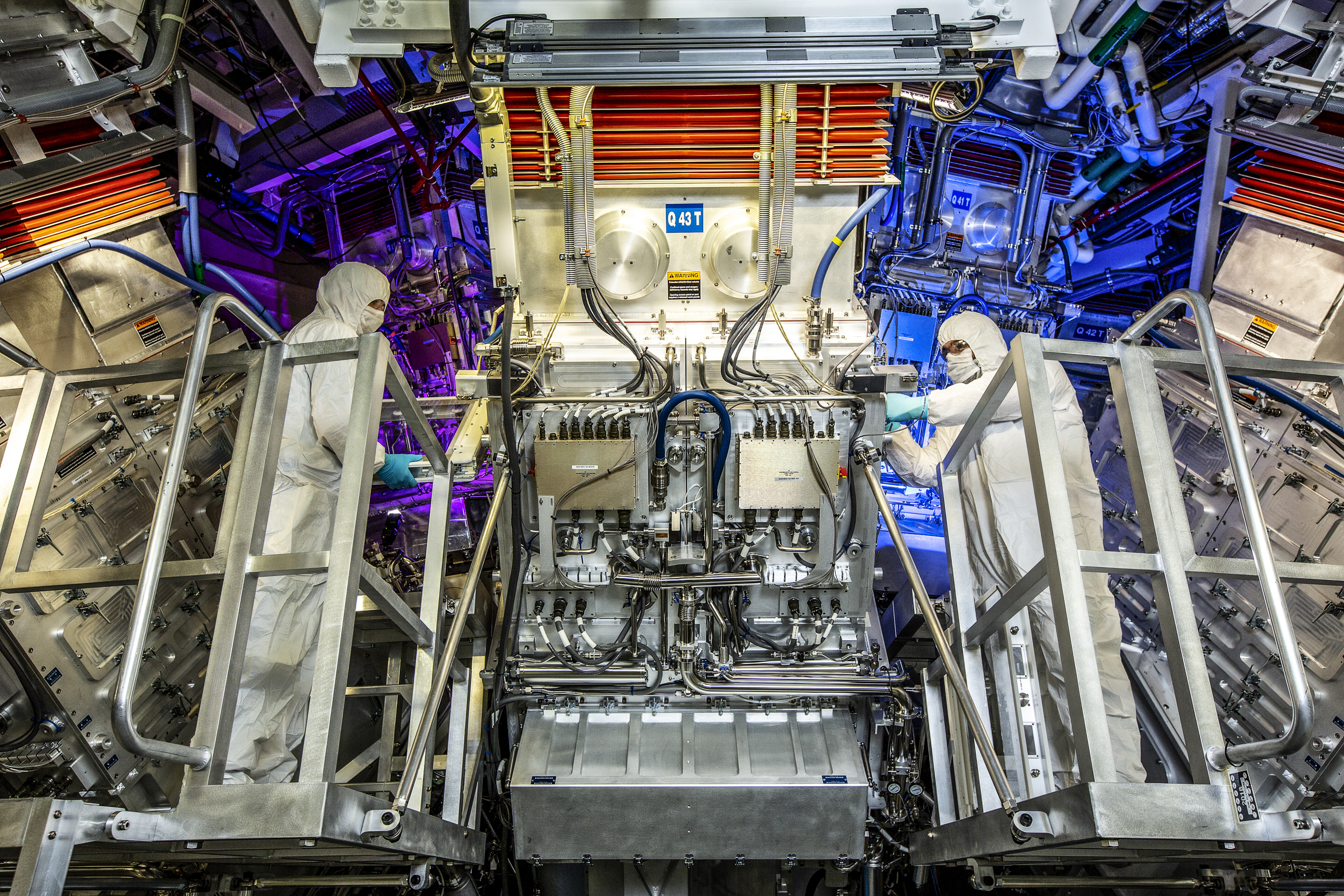Scientists at a government-funded lab have announced the first nuclear fusion reaction in a long-running project that researchers hope decades from now can provide limitless, carbon-free energy.
Scientists at Lawrence Livermore National Laboratory’s National Ignition Facility announced on Dec. 13 that they recently produced more energy than it took to create the reaction. If the experiment can be recreated at scale, it has the potential to move people off of fossil fuels in a significant way, a major environmental goal of President Joe Biden’s administration. And one with vast commercial opportunities in the clean energy market.
That’s still likely decades away, but the breakthrough announced by the Northern California facility is already a culmination of years of work to get to that point. The first fusion research goes back to the 1960s.
FUSION ENERGY CEO DISCUSSES ENDGAME FOR NUCLEAR
The Lawrence Livermore scientists
generated net energy
during a recent
nuclear
fusion experiment. And Biden administration officials, led by Energy Secretary Jennifer Granholm, hailed it as a big step forward in the development of carbon emissions-free commercial fusion
energy
.
It’s a significant advancement in nuclear physics that was decades in the making, with implications not just for nuclear weapons research but for U.S. energy and climate change policy, as lawmakers in both major parties focus more on expanding clean, reliable energy sources. Fusion powers the sun and other stars, and the fuel most commonly used to replicate fusion reactions are abundant on Earth, giving much hope for a new clean and seemingly endless source of energy.
The breakthrough took place on Dec. 5 at the Lawrence Livermore National Laboratory in the East Bay community of Livermore. There, scientists working in LLNL’s National Ignition Facility used laser energy, fired at a small volume of plasma fuel, to trigger a fusion reaction.
The reaction yielded 3.15 megajoules of fusion energy output, surpassing the 2.05 megajoules of energy put into the reaction by the laser.
“The pursuit of fusion ignition in the laboratory is one of the most significant scientific challenges ever tackled by humanity, and achieving it is a triumph of science, engineering, and most of all, people,” said LLNL Director Dr. Kim Budil. “Crossing this threshold is the vision that has driven 60 years of dedicated pursuit — a continual process of learning, building, expanding knowledge and capability, and then finding ways to overcome the new challenges that emerged.”
The prospect of fusion power has generated immense interest from governments and investors, but a demonstration of net energy gain in a replicated reaction had remained outstanding until now. Without net energy gain, fusion power would fail the profitability test.

An LLNL experiment carried out in August 2021 made some progress, yielding some 70% of the energy put into the reaction to inch “tantalizingly close” to fusion ignition, as one science writer put it.
The breakthrough experiment yielded more than 150% more energy.
That’s great news for companies working to harness fusion reactions and commercialize them in technologies to provide a clean, baseload power source with hydrogen-based plasma fuel — and no radioactive waste to boot.
Fusion involves the merging of atoms. It differs from nuclear fission, which involves the splitting of atoms, the process replicated in legacy reactors at nuclear power plants around the world.
When atoms fuse, as when they fission, they generate thermal energy, which can then be used to generate electricity without the greenhouse gas emissions resulting from other common thermal generating sources such as coal and natural gas.
Demonstration of net energy gain means a great deal to all nuclear companies out there trying to cash in on commercial fusion, said Andrew Holland, CEO of the Fusion Industry Association, who called the achievement “important science de-risking.”
“It de-risks for everybody, not just the inertial fusion companies, it de-risks the idea of, can you get ignited burning plasma?” Holland told the Washington Examiner.
The LLNL’s technology utilizes inertial confinement, harnessing laser energy to trigger the fusion reaction, while the other main branch of fusion utilizes magnetic confinement to contain superheated plasma.
Some have pointed out that even with the LLNL’s breakthrough, there’s still a long way to go to reach commercial fusion. Those voices include players
who are inside the industry
itself and are banking on its success.
The fusion endgame ultimately goes far beyond achieving a breakthrough in a lab,
said
Chris Kelsall, CEO of fusion power company Tokamak Energy.
“The endgame is a globally deployable, industrially scalable, low-cost, safe, secure solution that is available to a broad cross section of humanity, not just a few G-7 nations that can afford an expensive, VIP form of energy creation,” Kelsall said.
The LLNL’s full data picture shows which domino needs to fall next. The LLNL’s 3.15 megajoules value
didn’t account for the quantity of energy
that had to go into the laser itself — some 300 megajoules of electrical energy.
CLICK HERE TO READ MORE FROM THE WASHINGTON EXAMINER
That number would have to come way down for inertial confinement to become viable economically, Holland said. But he added that he expects the LLNL’s announcement to generate more interest and drive more capital to the industry, and capital enables problem-solving.
“The question of when do we get to a power plant — science and innovation is not just a function of time,” he said. “It’s a function of time and investment, time and resources, number of people, number of machines, number of everything on it.”








